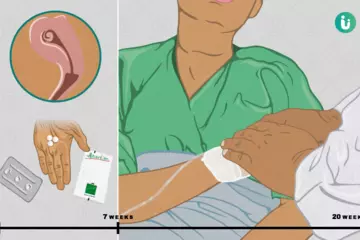What is Rickettsial Infection?
Infection caused due to a group of bacteria, which can be transmitted to human beings through the bite of mites, fleas, ticks, or lice, is called Rickettsia. Outbreaks of rickettsial disease are seen when human body lice spreads Rickettsia prowazekii (epidemic typhus) species. Person-to-person transmission does not occur in this infection.
Rickettsia species which are capable of causing infection (which is rare) in humans and are found in Australia include:
- Rickettsia typhi - Murine typhus
- Rickettsia australis - Queensland tick typhus
- Rickettsia honei - Flinders Island spotted fever
- Orientia tsutsugamushi - Scrub typhus
What are its main signs and symptoms?
The symptoms and severity of infection varies greatly between individuals. Most commonly and typically occurring symptoms include:
- At the place of introduction of infection (the bite site), a small, hard, black sore (eschar) is seen
- Cough
- Headache
- Fever
- Rash
- Muscular pain
- Swelling in the lymph glands
Rarely, difficulties in breathing and confusion are seen.
What are the main causes?
The main causes of rickettsial infection include:
- As the ticks and mites feed on humans, their saliva can directly transmit infection when they bite.
- In case of fleas, the site of bite is contaminated by faeces.
How is it diagnosed and treated?
As rickettsial infections are uncommon and rare, many a time, their diagnosis becomes difficult. The physician takes a detailed history of the signs and symptoms, which helps to diagnose. The doctor may advise the following tests for definitive diagnosis:
- Blood test
- Skin biopsy using skin sample from the site of the bite
Treatment of rickettsial infection includes:
- Examining the skin for bites (especially in the groin region, armpits, behind ears or knees, behind head) so that they can be managed and using insect repellents such as picaridin or keeping body covered with long-sleeved protective clothing and a broad-brimmed hat.
- As there is no vaccine for prevention, to reduce the duration and severity of the infection, antibiotics such as tetracycline or doxycycline are prescribed.
- Isolation of the affected individual from public places.
















